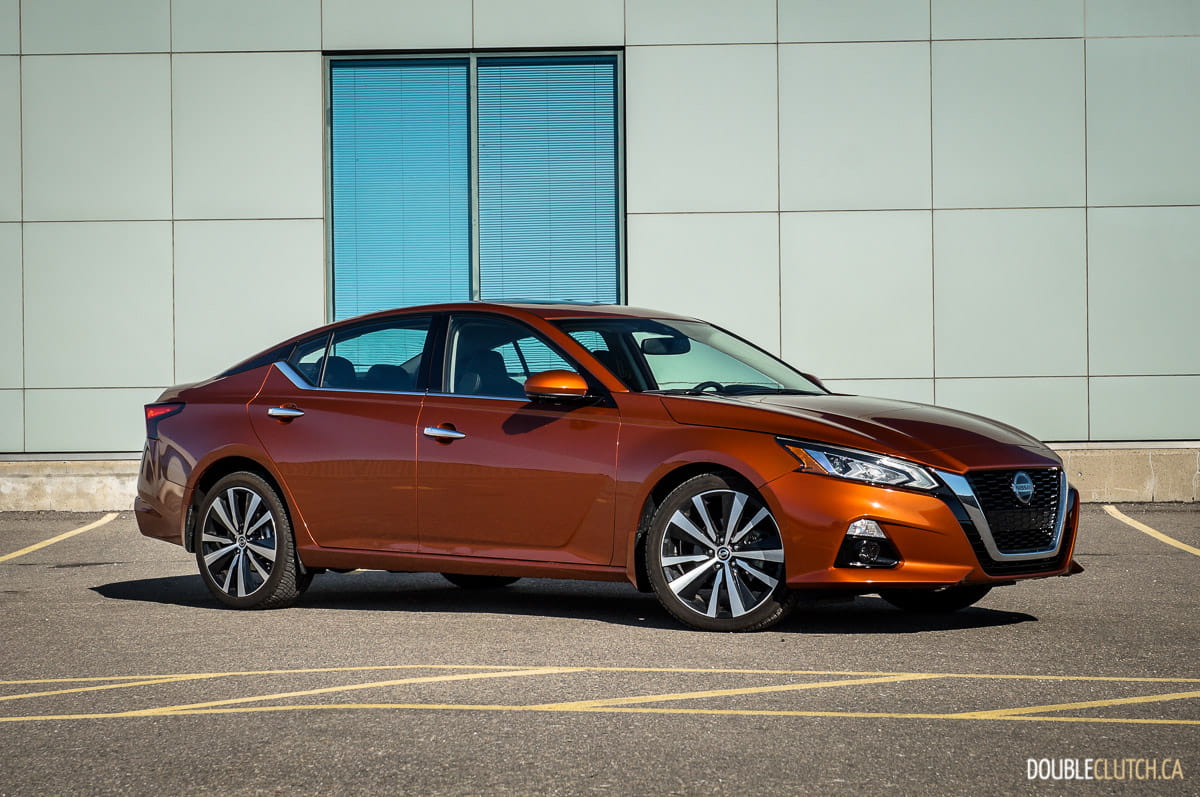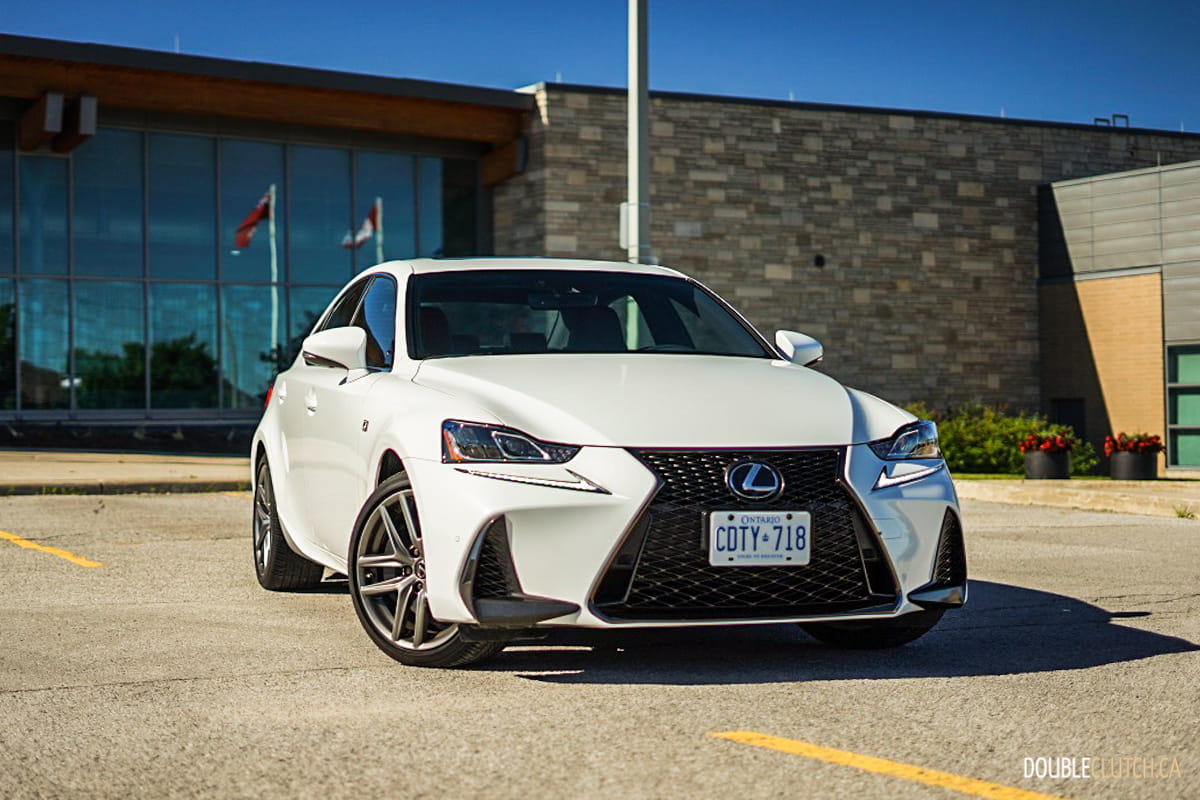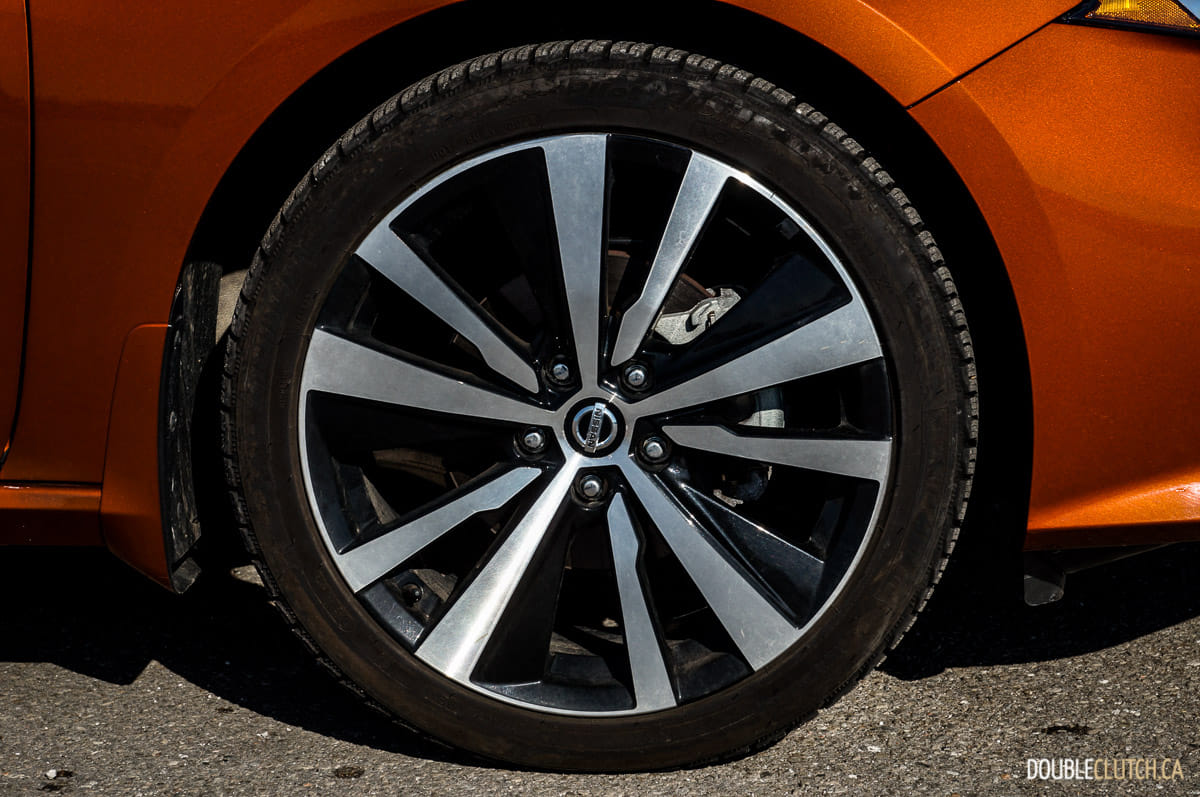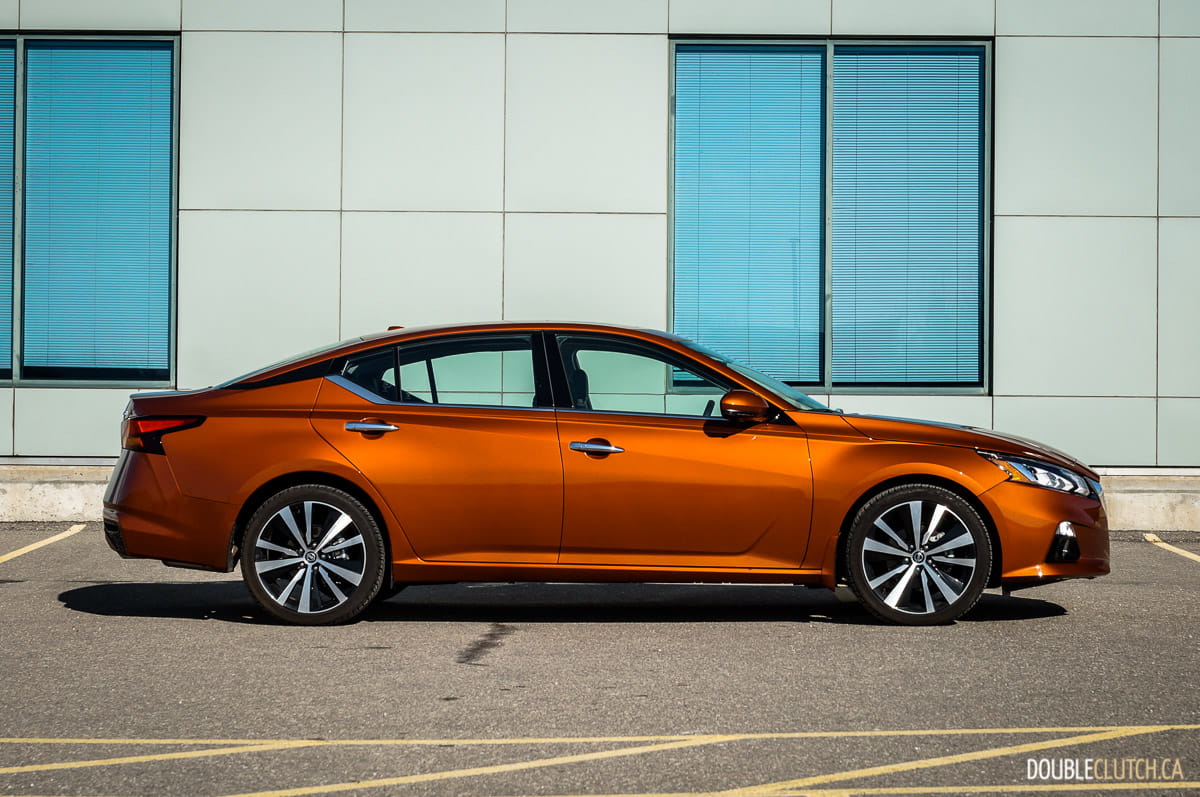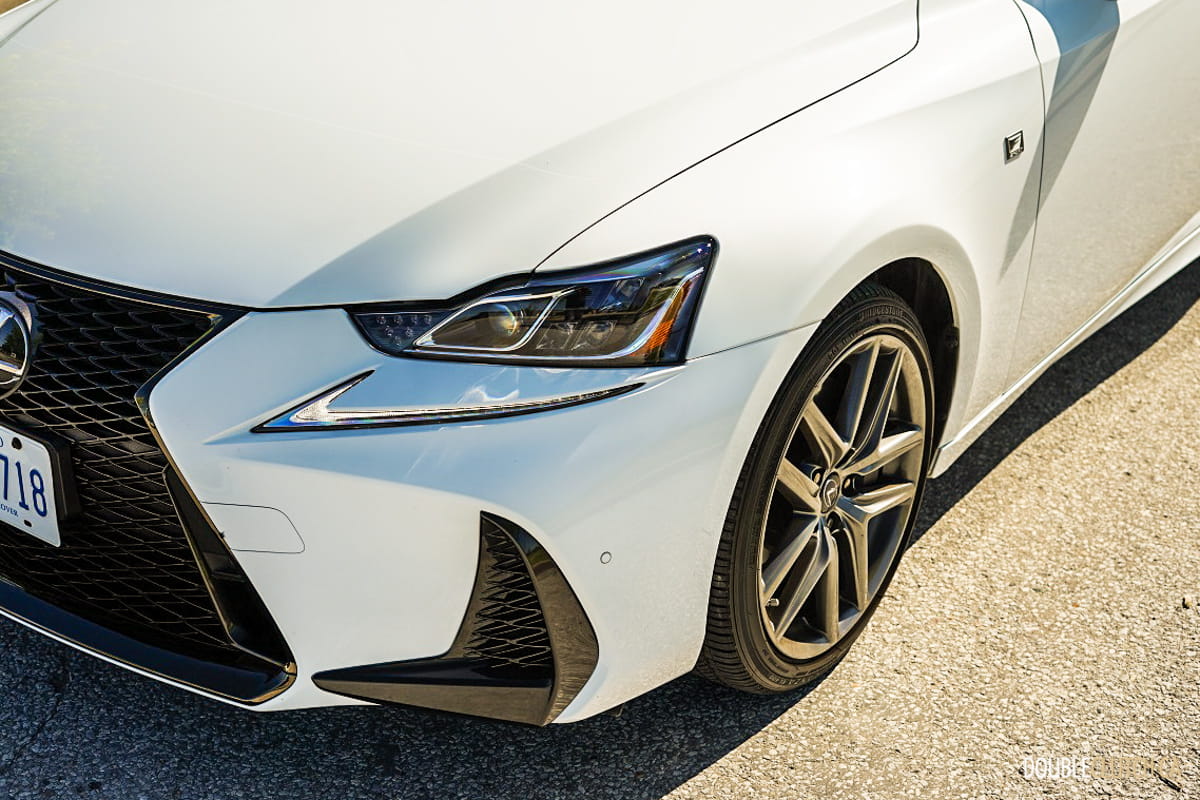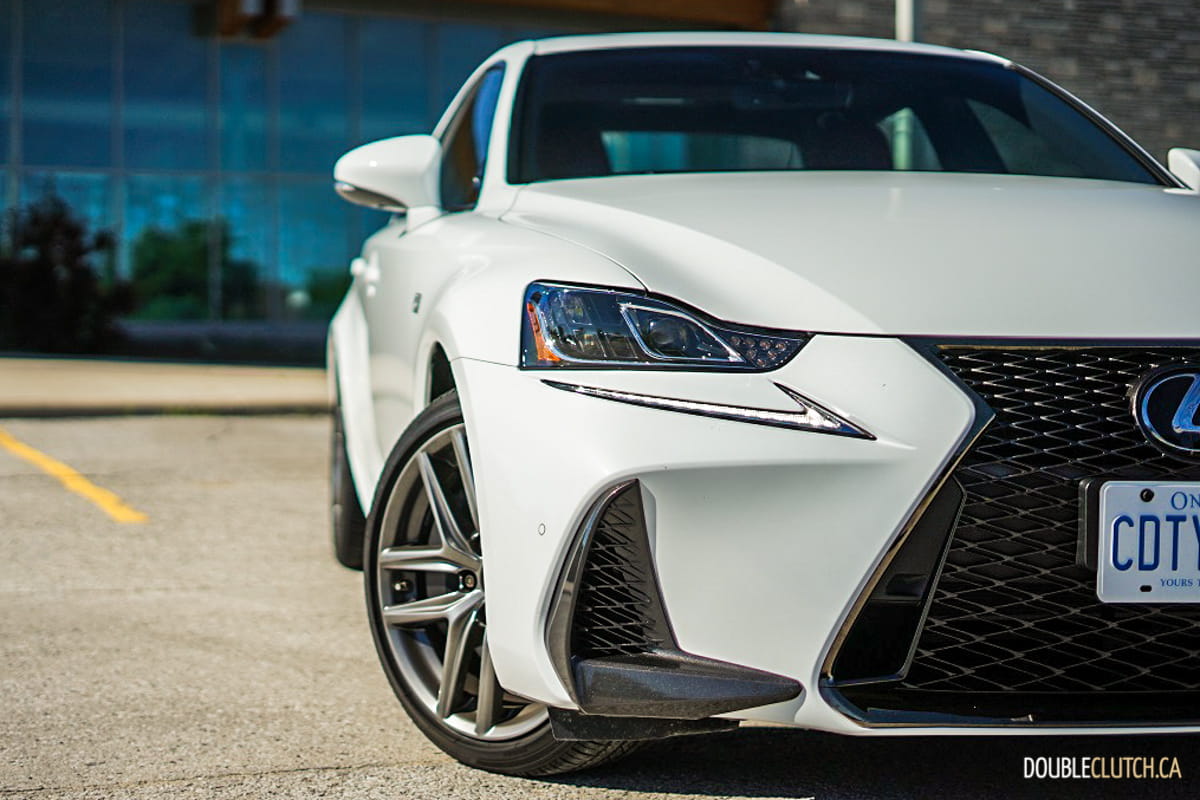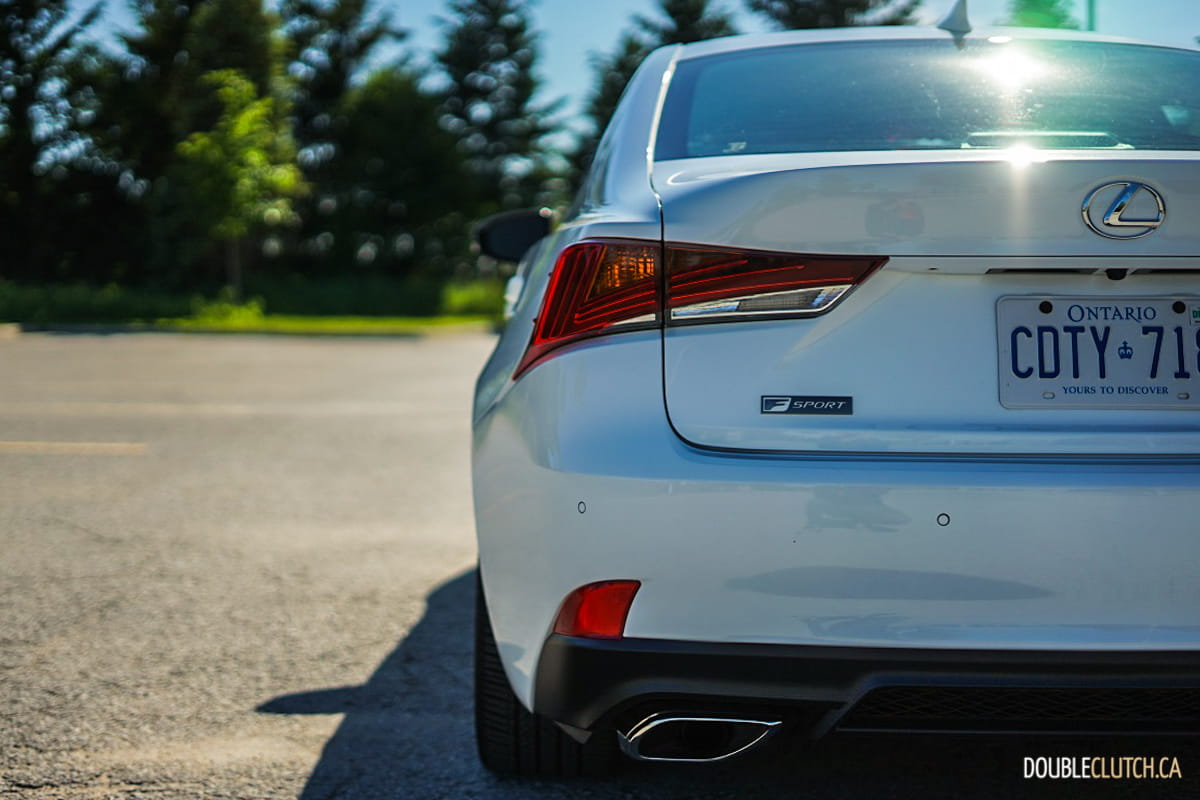It represented Lexus’s connection with the enthusiast buyer in offering a vehicle in the lineup that puts emphasis on a dynamic driving experience. The introduction of the first generation IS helped Lexus expand their reach to a younger audience by adding an entry model into the brand. Now in its third generation, this 2020 Lexus IS 350 F-Sport AWD continues to hold the important role as the entry way to the Lexus brand.
The IS has always done an excellent job in bringing loyal buyers back after having excellent experiences. Our tester this week is the 2020 Lexus IS 350 F-Sport AWD. It is the last model year for the third generation car, which has been in production since 2013. We set out to see how this seven-year old Lexus has stood up to the test of time. Let’s take a deeper look.
With the third-generation IS, the design team took a lot of risk and came up with a radical design with lots of aggressive sweeping lines. Lexus referred to their design language as L-Finesse at the time. The forward and aggressive design has paid off, as the IS350 aged exceptionally well and still looks modern to this day. The 2020 model being a refreshed model with the new Premium Triple-Beam LED Headlamps, looks especially sharp complementing the strong iconic spindle grill. The body lines are long and deep highlighting muscular fenders. A sweeping line starting down low from the side skirts connects to the tailing lights ending at the flared trunk lid; this screams aggression.

The interior was designed with a similarly forward approach, taking lots of inspiration from the LFA supercar. The dash has a main center dial which is a digital tachometer with numerical speedometer readout. The dial is modular and moves to display additional vehicle, navigation, media or drive assist information. The transmission tunnel is high, creating a racecar-like cockpit to enhance the sporty feel. There is a large 10-inch display recessed into the dash, providing crisp display of the car’s infotainment system.
The Lexus infotainment is well organized with intuitive organization of menu items. However, the input interface renders the system useless while on the move. It takes 110% percent concentration to use the joystick on the center console to operate the system. A touchscreen is not available hence there is no alternate to the finicky joystick. The omission of Android Auto and Apple CarPlay really dates this car against its competitors, and the clumsy infotainment is the single biggest drawback to the IS 350.
Consistent with Lexus fashion, the interior quality is top notch; there are no rough plastics to be found. All the touch points are appointed with supple leather. The red contrast stitching adds a touch of sportiness to the elegance. The seats are magical and best in class; they hug you from top to bottom but don’t feel intrusive when getting in and out. The Rioja Red seats have a nice deep tone which does not scream boy racer. Limiting the use of red leather and contrasting to a black dash allows the interior to be sporty yet subtle. The standard ventilated seats are some of the best in the business; the cooling is very noticeable and gets to temperature very quickly. Rear legroom is much improved from previous generations allowing two adults to fit comfortably in the back. Trunk space is ample at 306-liters, enough for golf clubs and baby strollers alike.
Powering the Lexus IS 350 is a 3.5-liter DOHC V6 with VVT-i producing 311 horsepower at 6,400RPM and 280 lb-ft. of torque at 4,800RPM. The powerplant uses tried and true variable valve timing with intelligence to generate impressive output while remaining naturally aspirated. The lack of a turbocharger means throttle response is immediate with a linear buildup of power surging towards redline. The engine is buttery smooth as the revs climb, reminding us all how special natural aspiration feels compared to the competition.
As wonderful as this engine feels, it is still disadvantaged against other turbocharged competitors with all the torque available down low in the power band. It takes more effort to get the revs up high where the power is. The six-speed automatic highlights the disadvantage of the naturally aspirated power band. The gearing is long, hence the engine is unwilling to rev to where the power is. This car would hugely benefit from an eight-speed automatic, as offered in the rear-drive versions available to our neighbours down south.
The use of this older powerplant also means the efficiency ratings lag behind. Fuel consumption is rated at 12.3L/100km city and 9.1L/100km highway, for a combined 10.9L/100km. During our week of testing we were able to average 12.1 L/100km. This is only marginally more than other turbocharged six cylinder products I have tested on the market, but is a small sacrifice for the godly smoothness.
The handling of the IS 350 was a complete surprise. The Adaptive Variable Suspension does an excellent job is allowing the IS to retain Lexus’ signature ride quality with a surprising level of athleticism. The double wishbone front suspension set up results in excellent steering response and high cornering stability. The multi-link rear suspension design maximizes grip confidence inspiring corning abilities. Vehicle Dynamic Integrated Management casts an extra safety net to prevent skidding or loss of control. Charging into a corner, the IS will dance with you in elegance; it’s easy to see why Lexus has chosen to keep the same chassis for the upcoming fourth-generation model.
The IS competes in the highly coveted segment of luxury sport sedans. The IS 350 competes against the segment defining BMW M340i (reviewed here) and Mercedes-AMG C 43. Both of these competitors now have significantly more power and chassis tuning on another level of aggression. The IS 350 starts at $53,350 with an as tested price of $57,200 here. The IS is very well equipped standard with the F-Sport package only contributing to cosmetic differences.
The BMW is priced significantly higher with a starting price of $65,000. The Lexus’ price matches up better with the 330i with a starting price of $52,604.73. A slightly cheaper BMW 330i (reviewed here) is less powerful and much more sparsely equipped. The Mercedes C 43 is slightly more expensive at $59,900 to start, but will need significantly more options to have it similarly equipped, bringing the price even higher. From the packaging and pricing, it is obvious the Lexus is much more focused on giving the buyer all the luxuries available at a reasonable price.
The 2020 Lexus IS 350 F-Sport AWD continues to remain relevant and competitive in the market despite being at the end of its life cycle. Its focus on interior quality and comfort is unparalleled. The chassis tuning is still excellent by comparison, but Lexus has not taken the chassis to the limit by creating a dedicated performance model. The IS is the perfect choice for those who enjoy comfort and quality over all out performance. As an entry to the Lexus line up, the IS puts Lexus design philosophy on full display without holding back.






